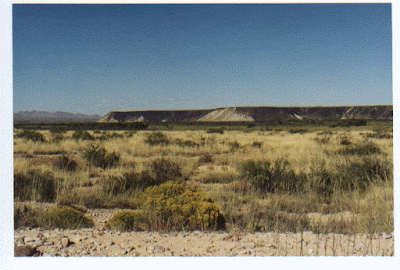Black Mesa
This is Black Mesa south of Socorro seen from west of the river. The town of San Marcial once existed near it until it was washed away in a flood. Long before it, an ancient Native American village grew crops and lived out their lives here.
The Rio Grande runs along the west side of the mesa. Oñate pushed his troops up through here when he entered New Mexico to retake it after the pueblo revolt. Years later, Confederate troops marched up river engaging the Union troops at Fort Craig which lies in its shadow. Then a little over seventy-five years later from that battle {where Confederate troops still had lancers (men armed with what were basically spears)} not far as the crow flies northeast of black mesa on White Sands missile range the Trinity project scientists unleashed the first atomic bomb as a test before using two more in WWII. Three keys events centering around this one geographical region in southcentral NM.
Looking out at it now, it’s hard to imagine any of that transpiring here around this black table of volcanic rock. The river still meanders slowly buy. No trace of the Conquistadores path remains. The battleground where men fought and died in the Civil War consists of a few crumbling stone walls and a surrounding trench the Union hastily dug before the approach of the Texas volunteers—the remains of Fort Craig. The tiny village of San Marcial has crumbled back into the desert. Only the silence of the Chihuahuan desert remains: breezes blowing through the greasewood and broom weed, the occasional bird call, at night possibly the howl of a coyote.
We believe we reign so important in our present moment, but time and history flow on just like the Rio Grande. Our self importance sinks into the desert soil for future archeologists to investigate and try to piece together the happenings we felt, in our time, so important.
